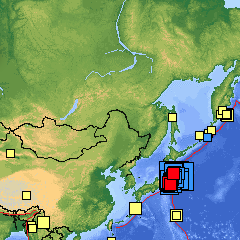In the early afternoon of March 11th a massive 8.9 magnitude earthquake struck just northeast of Japan. The earthquake, the seventh largest in history, caused widespread damage around Japan and triggered a tsunami. The effect of the latter is still being felt as it hits locations around the Pacific Rim.
In response Google has created an information page on the earthquake and an tool to help find missed persons. Below are a list of Twitterers who have been reporting on the disaster.
#JPQuake — While not an actual person, this keyword (hashtag) is being used by Twitterers to label a message as being related to the earthquake. Browsing this tag is a good way of staying up to date on new information coming out of the disaster zone.
Tomoko A. Hosaka — A journalist for The Associated Press in Japan, she is a great source for recent non-social media reports on the aftermath, particularly from news sources.
Steve Herman — Mr. Herman is the Bureau Chief for Voice of America in North Korea. Since the disaster started he has been been providing minute by minute updates on events, especially on the impact in South Korea.
Julian Dierkes — A sociologist researching Japan and Mongolia, Julian has been focused on relaying information from local Japanese media.
Okorih Arumakan — Tweeting in both English and Japanese, @hiroko_nakamura has been relaying on-the-ground information about the earthquake’s aftermath.
Martyn Williams — Regularly a technology reporter and Bureau chief for IDF News, Martyn has been a key source of information on the earthquake since it struck.
Tokyo Reporter — @TokyoReporter is an unnamed journalist and photographer in Tokyo and has been a big source of raw news reports of the impact of the earthquake and the tsunami.
This short list of Twitterers is just the start, Globe and Mail reporter Mark Mackinnon is putting together an extensive list that Twitter users can subscribe to directly. Please add your own suggestions in the comments.
